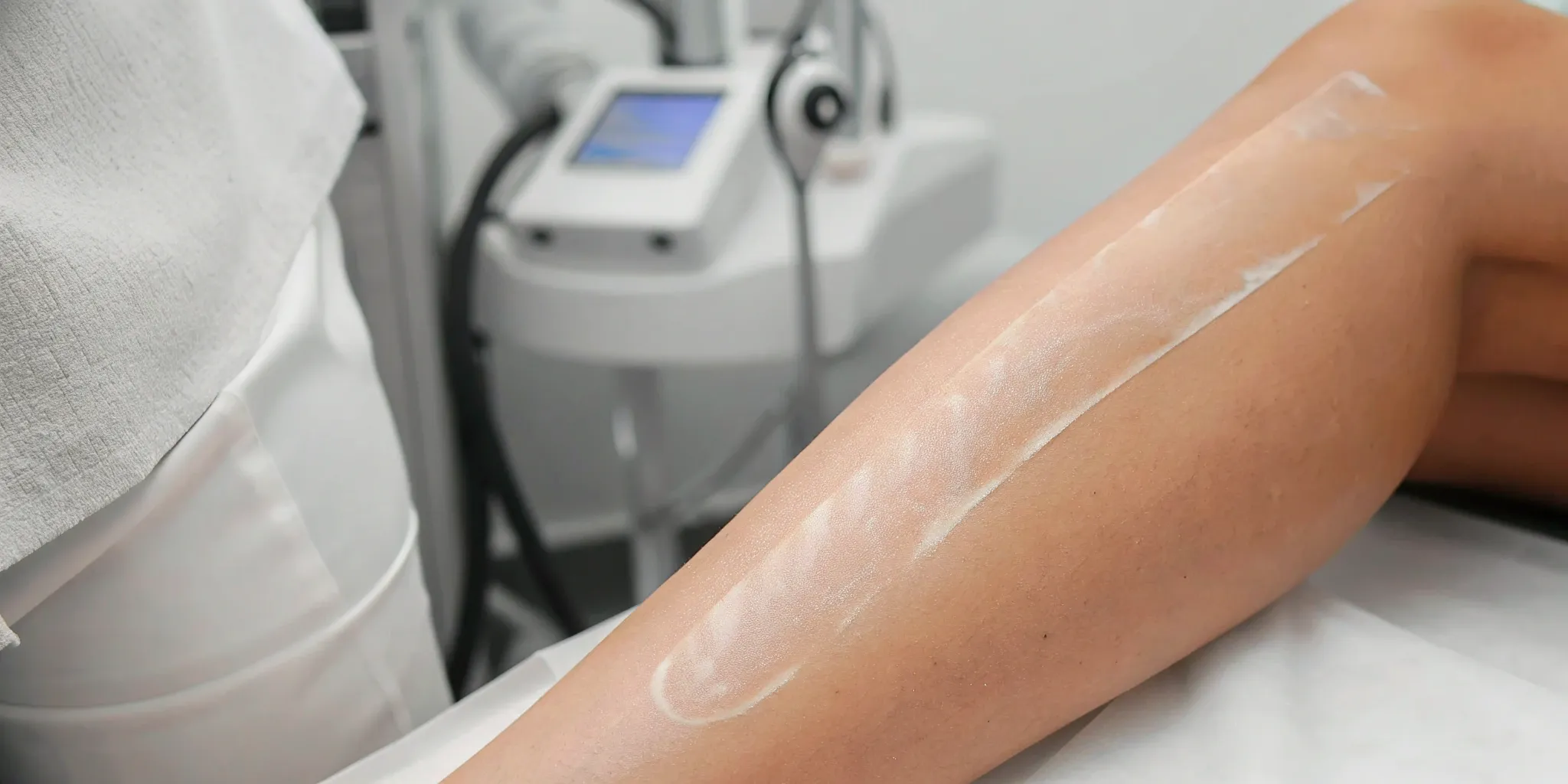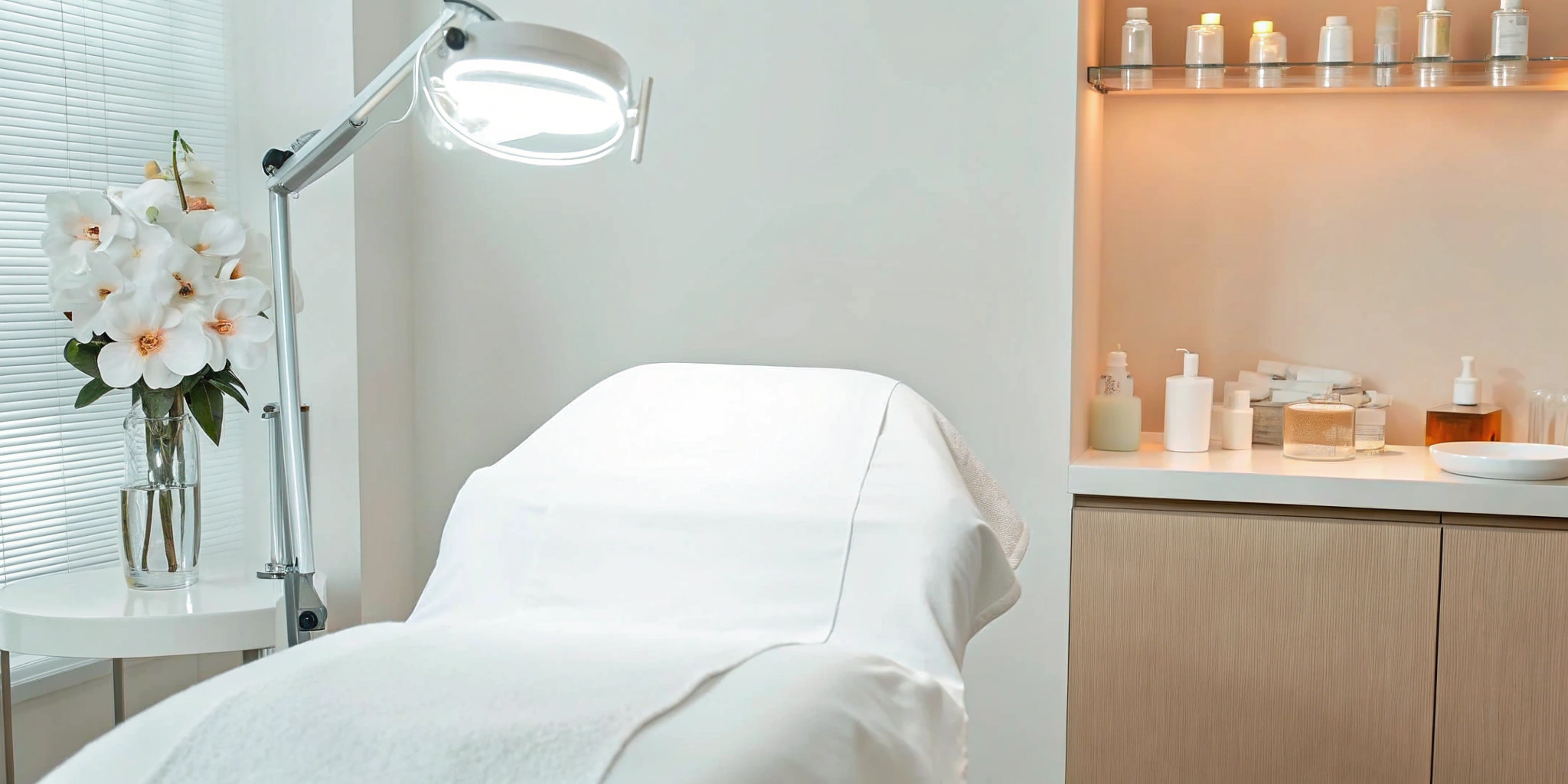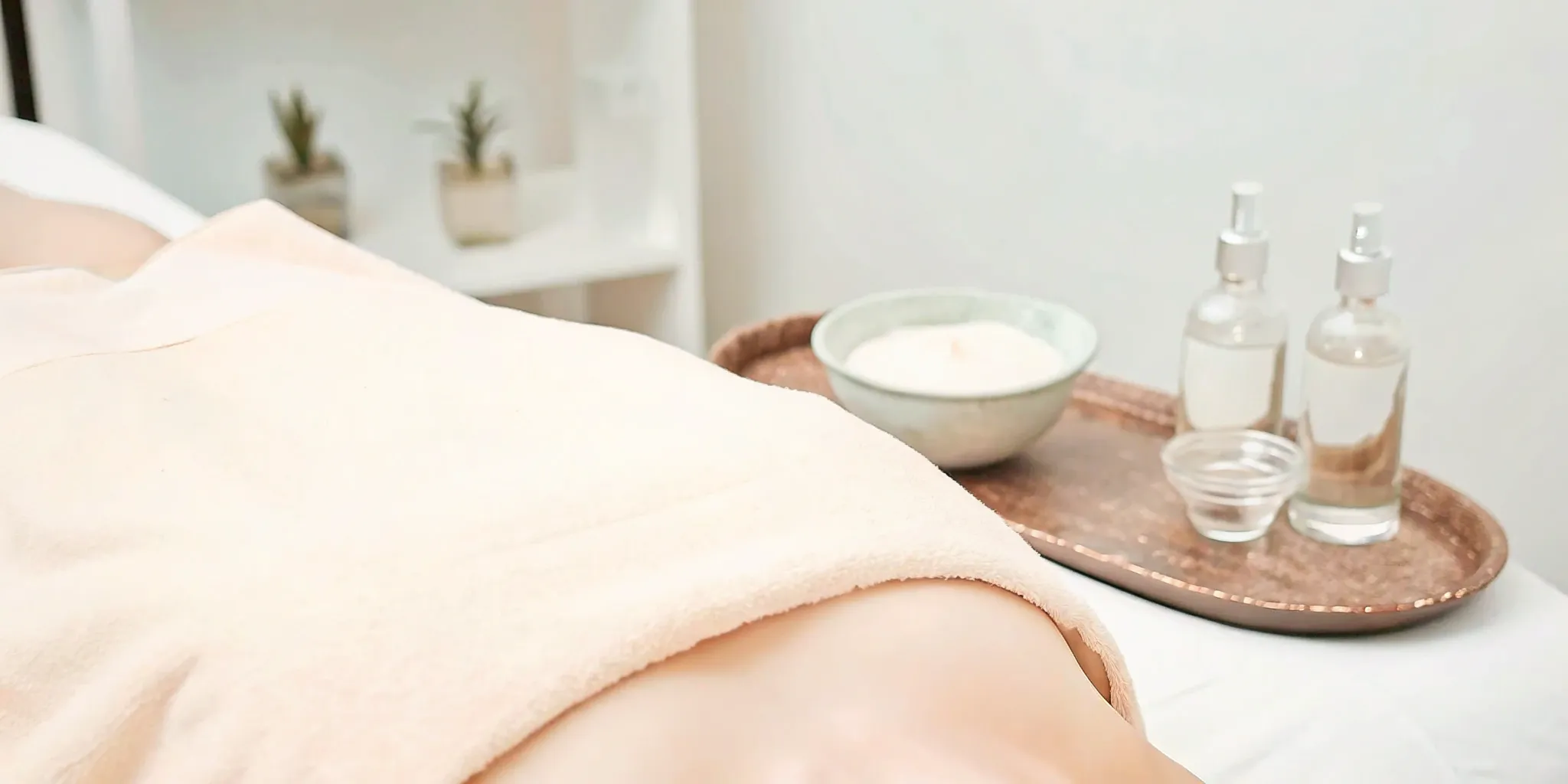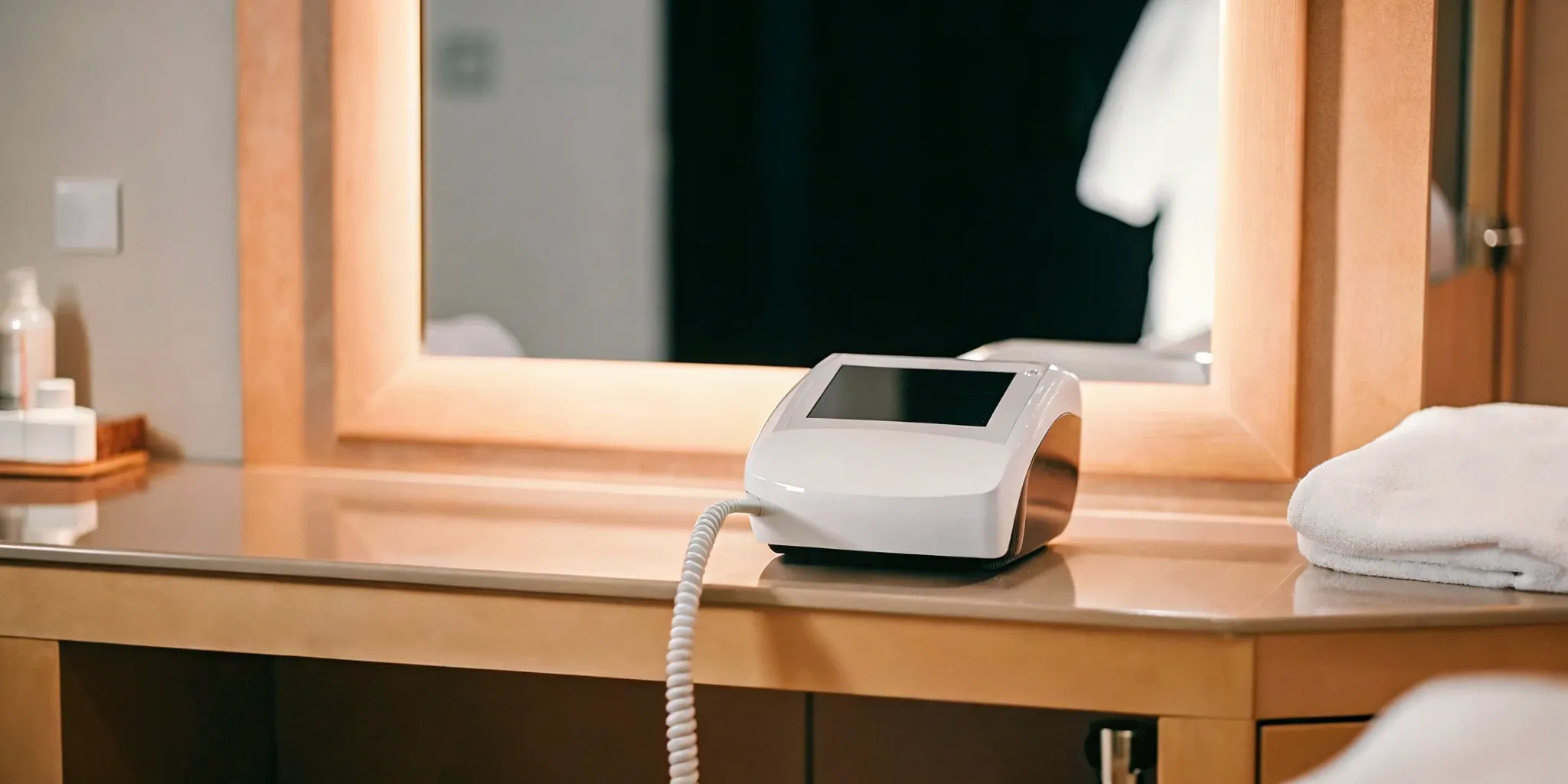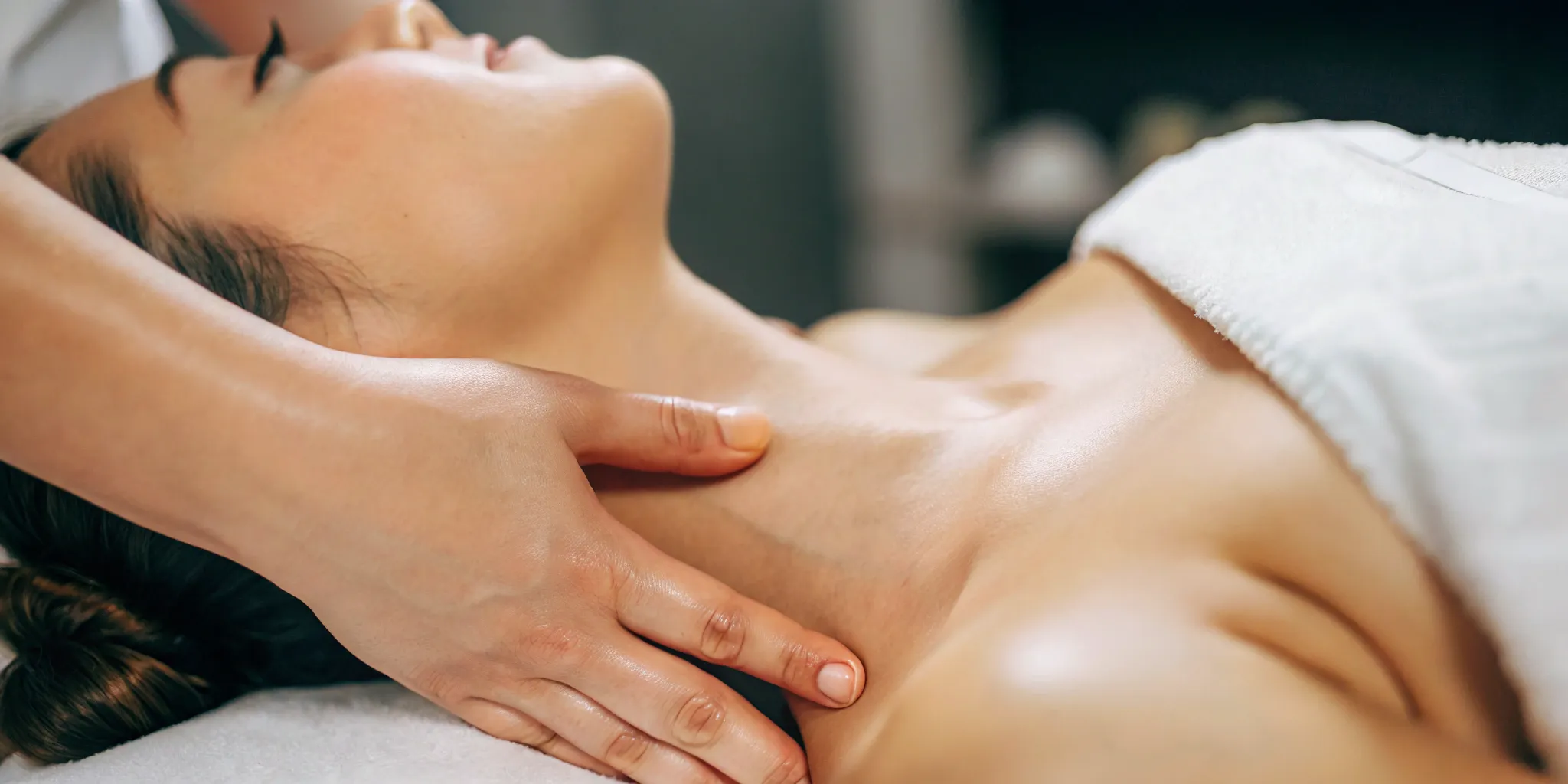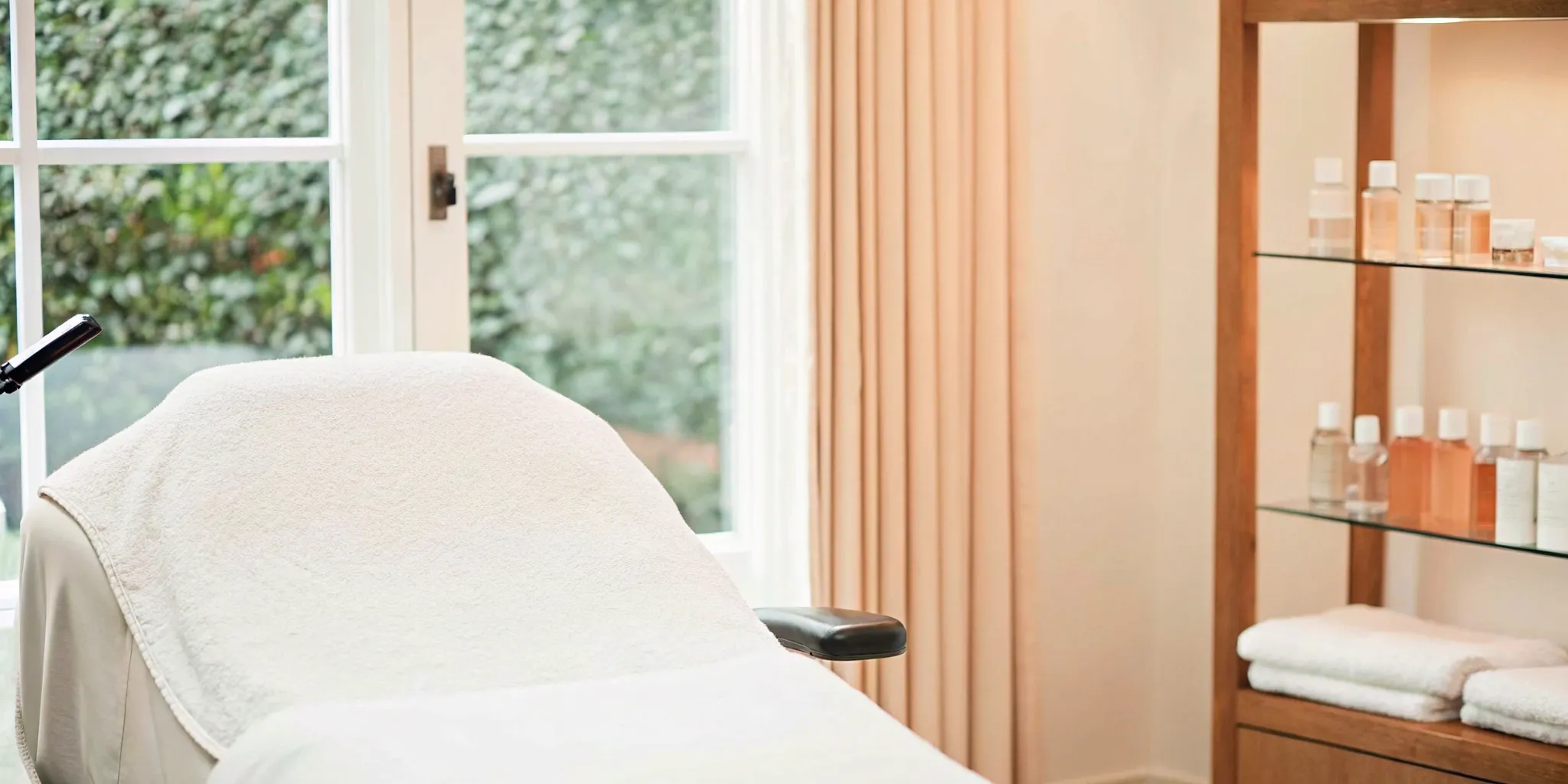We’ve all seen the stunning before-and-after photos that come from a professional chemical peel. The skin looks refreshed, clear, and incredibly smooth. This often leads people to wonder if it’s the right treatment for them, but that thought is usually followed by a more pressing one: are chemical peels safe? With so much conflicting information online and the temptation of risky at-home kits, getting a straight answer is crucial. Here, we’ll break down what you need to know about the procedure, the difference between normal healing and potential risks, and why professional expertise is non-negotiable for your skin’s health.
Key Takeaways
- Always Choose a Professional for Your Peel: Your safety and results depend on the provider’s expertise. A trained professional can accurately assess your skin, select the correct peel strength, and manage the treatment safely, avoiding the serious risks of burns and scarring linked to at-home kits.
- Match the Peel to Your Specific Skin Goals: Chemical peels are not a one-size-fits-all treatment. Whether you need a light peel for minor dullness or a medium peel for sun damage, the best outcome comes from a personalized plan that aligns the treatment with your unique skin concerns and history.
- Commit to the Aftercare for the Best Results: The success of your peel extends beyond the clinic. Following your post-care instructions, especially being diligent with sun protection and gentle moisturizers, is essential for proper healing and protecting your investment.
What Is a Chemical Peel?
Think of a chemical peel as a powerful reset button for your skin. It’s a professional cosmetic treatment where a specialized chemical solution is applied to your face, neck, or hands. This solution works to carefully remove the top, damaged layers of skin, encouraging your body to generate a fresh, new layer. The ultimate goal is to reveal the smoother, more radiant skin that’s been hiding underneath all along.
While the word “chemical” might sound a little intense, it’s a highly effective and popular way to address some of the most common skin frustrations we all face, from sun spots to fine lines. When performed by a trained professional, a chemical peel is a controlled and precise process designed to improve your skin’s texture and overall appearance. It’s one of the most trusted non-invasive aesthetic treatments available for achieving a clearer and more youthful complexion without resorting to more intensive procedures. The beauty of a chemical peel is its versatility; the type of peel and its strength are always tailored to your specific skin type and goals, whether you’re looking for a light refresh before a big event or a more significant transformation.
How Chemical Peels Renew Your Skin
A chemical peel works by accelerating your skin’s natural exfoliation process. By removing the outermost layer of dead and damaged cells, the treatment effectively smooths out the skin’s surface. This process can significantly improve the appearance of fine lines, sun damage, and uneven skin tone. It’s also a fantastic option for managing certain types of acne and reducing the visibility of acne scars. By clearing away the old, the peel stimulates new cell growth, leaving you with a complexion that looks and feels rejuvenated. Many clients find it helps with concerns similar to those addressed by microneedling, making it a versatile tool for skin renewal.
Light, Medium, and Deep Peels Explained
Chemical peels aren’t a one-size-fits-all solution; they come in different strengths to target different needs. Here’s a quick breakdown of the three main types:
- Light Peel: This is the gentlest option, removing only the outermost layer of skin (the epidermis). It’s perfect for treating fine wrinkles, mild acne, and dryness. It typically uses acids like glycolic or salicylic acid and may require a series of treatments for the best results.
- Medium Peel: This peel reaches a bit deeper, removing skin cells from the outer and middle layers. It’s more effective for moderate wrinkles, acne scars, and uneven skin tone.
- Deep Peel: As the most intensive option, a deep peel penetrates the lower dermal layer to address more significant issues like deep-set wrinkles, scars, or even precancerous growths. This is a serious procedure that provides dramatic results and is typically only performed once.
Are Chemical Peels Safe? A Look at the Risks
When you hear the words “chemical peel,” it’s natural to have questions about safety. The good news is that when performed by a trained and licensed professional, chemical peels are a safe and effective way to refresh your skin. The key is understanding the process, managing your expectations, and knowing the difference between normal side effects and potential complications.
Like any cosmetic procedure, there are risks involved. However, most of these are mild and temporary, resolving as your skin heals. The most significant risks often come from improper application, especially with dangerous at-home kits, or from not following post-care instructions. At a professional medspa, your provider will conduct a thorough consultation to ensure a peel is right for your skin type and goals, which is the most important step in ensuring a safe outcome. We’ll walk through what to expect and what myths to ignore.
Potential Side Effects vs. Serious Complications
Let’s be direct: after a professional chemical peel, your skin will look a little angry before it looks amazing. Redness, some swelling, and eventual peeling or scabbing are all normal parts of the healing process. Think of it as your skin shedding its old, damaged layer to reveal the fresh, new skin underneath. These effects are temporary and expected.
Serious complications are rare but important to know about. Some people may experience temporary or permanent changes in skin color, either lighter or darker. This is a higher risk for those with darker skin tones or a family history of discoloration. Infection and scarring are also possible, though very uncommon when you’re in the hands of an experienced professional who provides clear aftercare instructions.
Common Myths About Peel Safety
One of the biggest myths is that chemical peels are a magic wand for all skin issues. While they work wonders for fine lines, sun damage, and acne, they can’t remove deep scars or tighten significantly sagging skin. It’s also a myth that a stronger peel is always better. The right peel for you depends entirely on your skin type, concerns, and lifestyle—something a professional can determine.
Another misconception is that if a little is good, more is better. This leads people to try dangerous, professional-strength peels at home, which can cause chemical burns and permanent scarring. The truth is that safety lies in expertise. Having open communication with your provider about your medical history and goals is the best way to ensure a safe procedure with beautiful results. At Ultimate Image MedSpa, we prioritize this conversation during your initial consultation.
Is a Chemical Peel Right for You?
Deciding on a new skincare treatment can feel like a big step, but it doesn’t have to be confusing. A chemical peel can be a fantastic way to refresh your skin, but it’s not a one-size-fits-all solution. The key is understanding your own skin goals and health history. Let’s walk through who typically sees the best results from a peel and when it might be better to wait or consider another option. Your safety and satisfaction are the top priorities, so figuring out if you’re a good candidate is the most important first step.
Who Benefits Most from a Peel
You might be a perfect candidate for a chemical peel if you’re looking to address specific skin concerns. Peels are incredibly effective at improving the appearance of fine lines and wrinkles, giving your skin a smoother, more youthful look. They can also be a game-changer for those dealing with acne and lingering acne scars. If you struggle with uneven skin tone, sun spots, or other forms of discoloration, a peel can help create a more balanced and radiant complexion. Essentially, if your goal is to hit the reset button on your skin’s texture and tone, this is one of the most effective services we offer.
When to Avoid a Chemical Peel
While peels offer amazing benefits, safety always comes first. There are a few situations where a chemical peel might not be the best choice for you right now. If you’ve used isotretinoin (a powerful acne medication) within the last six months, have a personal history of keloid (raised) scarring, or are pregnant, it’s best to hold off. Similarly, if you get frequent or severe cold sore outbreaks, a peel could trigger one. Your ability to stay out of the sun during the healing phase is also crucial for a safe recovery. The best way to know for sure is to talk it over with a professional. We can discuss your health history and find the perfect treatment for your needs.
Professional vs. At-Home Peels: Which Is Safer?
When it comes to chemical peels, the difference between a professional treatment and an at-home kit isn’t just about results—it’s about your safety. While the idea of a quick DIY peel might seem tempting, the risks associated with using potent acids without expert supervision are significant. A trained professional understands skin anatomy, can properly assess your needs, and knows how to handle unexpected reactions. This expertise is what separates a safe, effective treatment from a potential skin disaster. Let’s break down why leaving peels to the pros is the only safe choice.
The Dangers of DIY Peels
At-home chemical peels are a gamble with your skin’s health. Many products sold online contain high concentrations of acids that can cause serious injuries if used incorrectly. We’re talking about painful chemical burns, swelling, lasting discoloration, and even permanent scarring. Because these kits are not regulated, you don’t really know the exact strength or purity of the ingredients you’re putting on your face. An unexpected reaction could lead to an infection or an injury requiring urgent medical care. It’s a high price to pay for convenience when your skin is on the line.
Why See a Professional
Choosing to get a peel from a licensed professional is the single most important step you can take for your safety. A trained expert at a medical spa will conduct a thorough skin analysis before ever applying a peel. They can identify your skin type, discuss your history (like hormone use or past discoloration), and choose the right peel formulation and strength for you. While any cosmetic procedure has minor risks, a professional knows how to minimize them. They can manage side effects and ensure the treatment is both safe and effective, giving you peace of mind alongside glowing results.
What the FDA Says About At-Home Kits
The U.S. Food and Drug Administration (FDA) has been very clear on this topic. They issued a formal warning against using at-home chemical peel products. The FDA highlights that kits containing strong acids like TCA, glycolic acid, and salicylic acid are not approved for home use and can be dangerous. Their official guidance states that these treatments should only be applied by a dermatologist or another trained and qualified professional. This isn’t just friendly advice; it’s a serious safety alert from the nation’s leading consumer protection agency.
How to Prepare for Your Chemical Peel
Getting ready for a chemical peel involves more than just scheduling the appointment. Proper preparation is key to ensuring your treatment is both safe and effective, helping you achieve that smooth, radiant skin you’re looking for. Think of it as setting the stage for amazing results. Taking a few simple steps beforehand can make all the difference in your experience and final outcome. Here’s a straightforward guide on what to do before you head in for your peel.
Find a Qualified Professional
This is, without a doubt, the most important step. The safety and success of your chemical peel depend entirely on the skill of the person performing it. Medical experts agree: you should always seek out a trained, qualified professional. The Mayo Clinic recommends choosing a qualified dermatologist or dermatologic surgeon for skin procedures. This ensures your provider has a deep understanding of skin health and can perform the treatment correctly. At a licensed medspa, you’ll find experienced aestheticians working under medical supervision, giving you peace of mind. Don’t be shy about asking about credentials and experience—a true professional will be happy to share them.
Your Pre-Peel Consultation Checklist
Your consultation is a crucial two-way conversation. It’s your chance to lay out your goals and your provider’s opportunity to create a personalized treatment plan. Be prepared to discuss your expectations and any concerns you have. Your provider will review your medical history and examine your skin to determine the best type of peel for you. It’s vital to be open about your skin’s past. The American Society of Plastic Surgeons notes that you should always inform your doctor if you have a history of keloids or unusual scarring. Also, ask if you need any pre-treatment medications, like an antiviral if you’re prone to cold sores. This thorough check-in ensures your peel is tailored perfectly to you.
What Happens During a Chemical Peel?
Knowing what to expect during your appointment can take a lot of the guesswork and anxiety out of the process. A professional chemical peel is a straightforward procedure, and your provider will be with you every step of the way. Let’s walk through what happens from the moment you’re in the treatment room to the days following your peel.
The Procedure, Step by Step
First, your skin will be thoroughly cleansed to remove any oils or makeup. Then, your provider will carefully apply the chemical solution to the treatment area. As the solution gets to work, it’s common to feel a warm, tingling, or mild stinging sensation. The intensity depends on the type of peel you’re receiving—a light peel might feel like a slight tingle, while a medium peel can feel more like a noticeable stinging or burning. Your provider will monitor your skin closely throughout the application and will neutralize the peel at the right time. Our team is trained across a wide range of aesthetic services and will ensure you’re comfortable.
What It Feels Like and What to Expect After
Immediately after the peel, your skin will likely look and feel like it has a mild sunburn. Redness, some swelling, and a feeling of tightness are all normal. Over the next 3 to 7 days for a light peel, you’ll notice some scaling or flaking as the old skin sheds. For medium peels, this process can last 7 to 14 days and may include more significant redness and peeling. The most important thing is to follow your aftercare instructions precisely, especially when it comes to sun protection and moisturizing. If you have any questions during your recovery, don’t hesitate to contact us. Avoid picking or scratching at your skin to ensure a smooth, beautiful result.
Your Post-Peel Care Plan
Think of your post-peel routine as the second half of the treatment itself. What you do in the days and weeks after your appointment is just as important as the peel for achieving that smooth, radiant skin you’re looking for. Your skin is in a delicate, regenerative state, and giving it the right care ensures a beautiful, healthy heal. At Ultimate Image MedSpa, we’ll walk you through a personalized aftercare plan, but here’s a great overview of what to expect and how you can be an active partner in your skin’s renewal. Following these steps will help you protect your investment and get the best results possible.
The First 48 Hours: Essential Aftercare
Right after your peel, your skin will likely feel tight and look a bit red, similar to a mild sunburn. This is a completely normal part of the process. Depending on the strength of your peel, you might see some light flaking within a few days. The key during this initial phase is to be incredibly gentle. Avoid any harsh cleansers, exfoliants, or active ingredients like retinoids. Instead, use a simple, soothing cleanser and the moisturizer recommended by your provider. Most importantly, you must protect your fresh skin from the sun. Apply a broad-spectrum sunscreen of SPF 30 or higher daily, and don’t forget to reapply. And as tempting as it might be, please don’t pick or peel at any flaking skin—this can lead to scarring or discoloration. Following these aftercare instructions is crucial for a smooth recovery.
Long-Term Care for Lasting Results
Once your skin has fully healed, your focus should shift to maintaining your gorgeous results. The single most important thing you can do is commit to daily sunscreen use. Sun exposure is the primary cause of the very concerns—like fine lines and discoloration—that peels are meant to address, so protecting your skin is non-negotiable. After about a week, and with your provider’s approval, you can gradually reintroduce your regular skincare products. A consistent routine tailored to your goals will extend the benefits of your peel. Many people find that a series of light or medium peels delivers the most significant improvement over time. You can also explore other aesthetic procedures to complement your results and support your long-term skin health.
How Often Should You Get a Chemical Peel?
One of the most common questions I hear is about timing: how long should you wait between chemical peels? The honest answer is, it depends. The right frequency for you is based on the type of peel you get, your specific skin goals, and how your skin responds to treatment. It’s not a one-size-fits-all schedule. Think of it like a fitness plan—what works for a marathon runner is different from what a beginner needs. Your skin needs time to go through its natural cycle of healing and regeneration, and the intensity of the peel determines how long that cycle takes.
Light peels can be part of a regular routine, while deep peels are more of a once-in-a-while major reset. The goal is always to give your skin enough time to heal completely. Pushing treatments too close together won’t speed up your results; in fact, it can lead to irritation, sensitivity, and setbacks. Working with a professional is the best way to create a safe and effective treatment calendar tailored just for you. They can assess your skin’s progress and adjust the plan as needed to ensure you get that healthy glow without overdoing it. At Ultimate Image, we design personalized treatment plans to match your unique needs and help you achieve your goals safely.
Treatment Schedules for Different Peels
The strength of the peel directly dictates your treatment schedule. Here’s a general guide to help you understand the timing. According to the Mayo Clinic, light or “superficial” peels can often be performed every one to four weeks. These are great for ongoing maintenance to address concerns like dullness or minor texture issues. Medium peels, which target deeper imperfections, require more recovery time. You can expect to schedule these every three to six months. Finally, deep peels are the most intensive and are typically a one-time treatment or performed only once every few years.
Know When to Take a Break
Giving your skin a proper break isn’t just a suggestion—it’s essential for healing and achieving the best results. After a medium peel, your skin needs at least three to six months to fully recover before you consider another session. This downtime allows new, healthy skin to emerge and lets you and your provider accurately assess your results. For deep peels, the recovery is even more significant, often taking several weeks. Pushing for another treatment too soon can compromise your skin’s health. The best approach is always to consult with a qualified professional who can create a safe schedule based on your skin type and the peel used. Ready to find out what’s right for you? Let’s start the conversation.
Ready to Decide? Here’s What to Consider
Making a choice about any cosmetic treatment is a personal one, and it’s all about feeling informed and confident. Before you move forward with a chemical peel, take some time to weigh the benefits against the realities of the procedure and prepare for a productive conversation with a professional. This is your opportunity to ensure the treatment aligns perfectly with your skin goals and comfort level.
Balance the Pros and Cons
A chemical peel can be a fantastic way to refresh your skin, but it’s smart to look at the full picture. On one hand, peels can significantly improve the appearance of fine lines, acne, and uneven skin tone. This is the glowing result everyone hopes for. On the other hand, you should expect some temporary redness, swelling, and scabbing as your skin heals. While rare, more serious risks like scarring are possible, which is why at-home kits are so dangerous. The key is understanding that both the benefits and potential side effects are part of the process, and a professional can help you manage them safely.
Key Questions for Your Provider
Your consultation is the most important step. It’s your time to get clarity and feel confident in your decision. Come prepared with questions for your provider to make sure you’re on the same page. Start by discussing your goals and what you can realistically expect. Ask about their qualifications and experience with chemical peels. Be ready to review your full medical history, and don’t forget to ask what you can do to minimize risks, like taking pre-treatment medication if you’re prone to cold sores. A great provider will welcome your questions and give you clear, honest answers. Feeling comfortable and informed is non-negotiable, so don’t hesitate to schedule a consultation to get started.
Related Articles
- VI Peel Results: What Happens During and After Treatment
- VI Peel Before & After: 1 Treatment Results – Ultimate Image MedSpa
- VI Peel Purify: The Ultimate Guide to Clear Skin – Ultimate Image MedSpa
Frequently Asked Questions
Does a chemical peel hurt? This is probably the most common question I get, and the honest answer is that you’ll likely feel something, but it’s very manageable. Most people describe the sensation during a light peel as a warm tingling. For medium peels, you might feel a more noticeable stinging or burning feeling while the solution is on your skin. Your provider is with you the entire time to monitor your comfort, and the sensation subsides once the peel is neutralized.
How much downtime should I actually plan for? The amount of social downtime you’ll need really depends on the strength of your peel. After a light peel, you might have some redness and light flaking for a few days, but you can typically go about your daily life without much interruption. For a medium peel, the peeling is more significant and can last for about a week. Many clients schedule their medium peels so the majority of the healing happens over a weekend or when they have a lighter social calendar.
When will I see my final, glowing results? Patience is key here! While your skin will feel softer shortly after the initial peeling stops, the full benefits take a little time to appear. The peel stimulates new collagen production and cell turnover, so your skin’s texture and tone will continue to improve for several weeks after your treatment. Most people see their final, most radiant results about one month after a light or medium peel.
Can I get a chemical peel if I have sensitive skin or rosacea? This is a great question and it highlights why a professional consultation is so important. While some peels can be too aggressive for very sensitive or rosacea-prone skin, there are gentler options, like lactic acid peels, that can be very effective. A skilled provider can assess your skin’s specific condition and determine if a carefully selected light peel is a safe choice for you, or if another treatment might be a better fit.
What’s the main difference between a peel and a treatment like a HydraFacial? Think of it in terms of goals. A HydraFacial is a fantastic treatment for deep cleansing, hydrating, and giving your skin an immediate, dewy glow with no downtime. A chemical peel is more of a corrective treatment designed to address deeper concerns over time. It works by removing damaged outer layers of skin to improve issues like fine lines, sun damage, and acne scarring, which requires a healing and renewal period.


